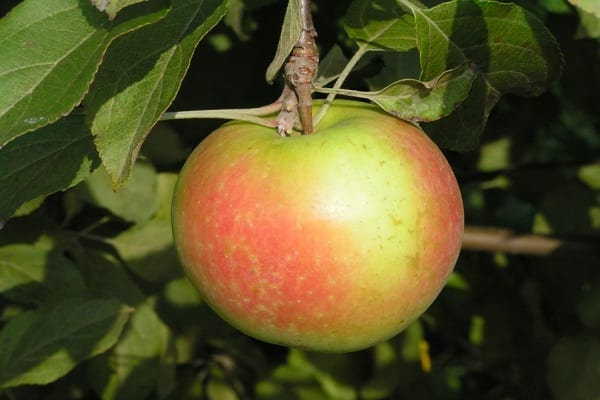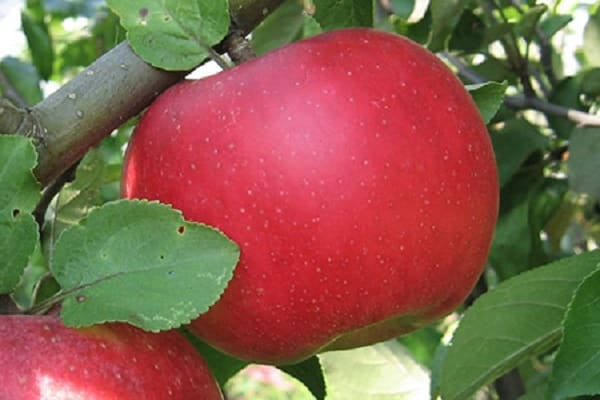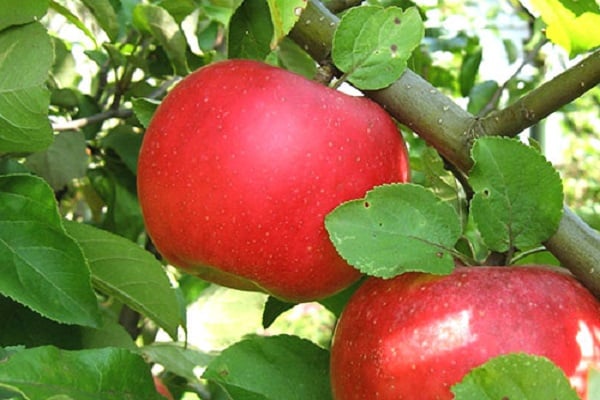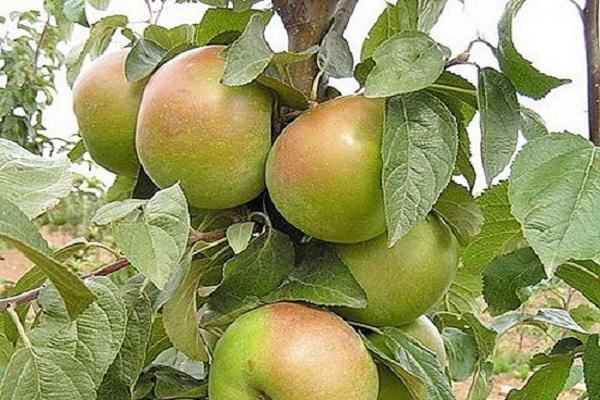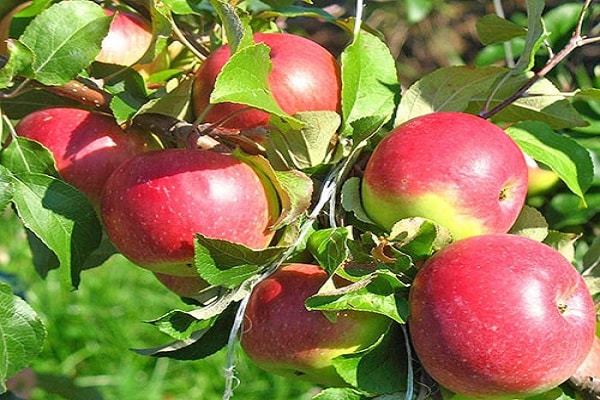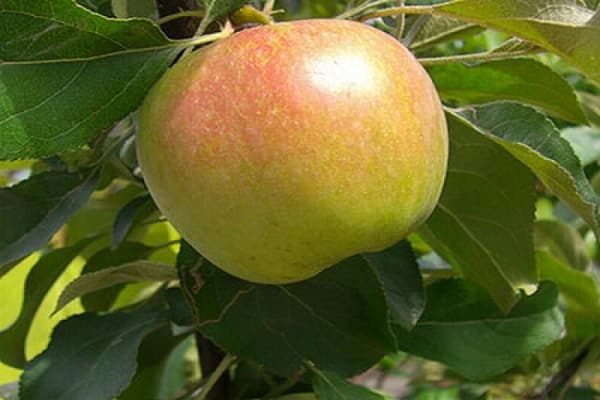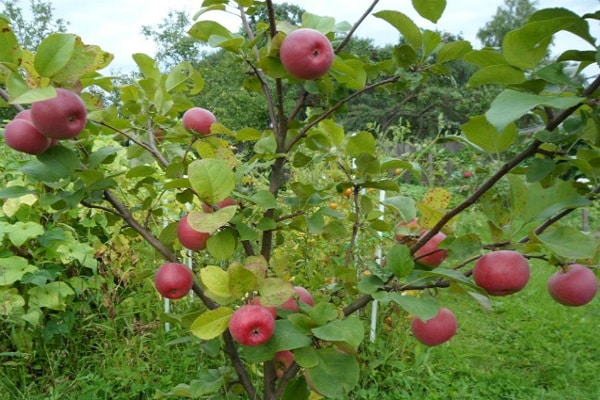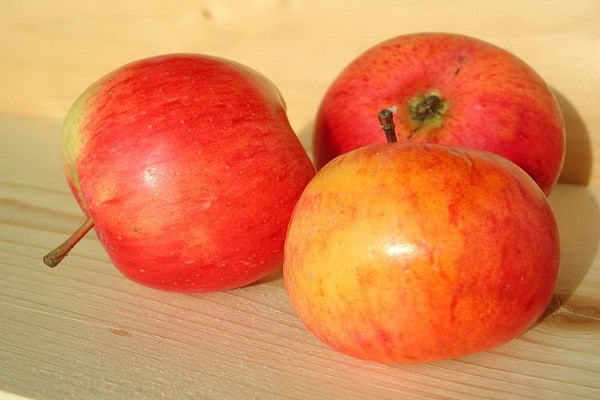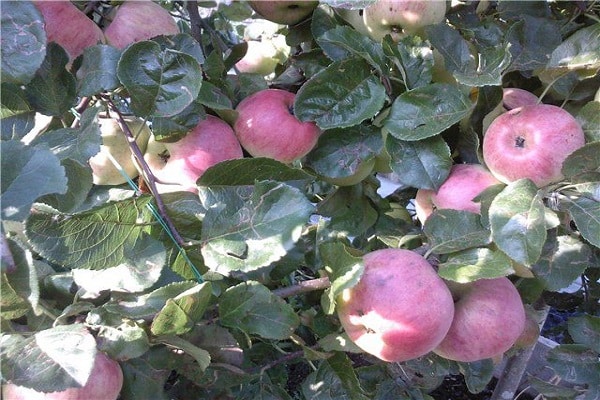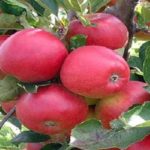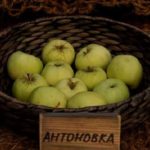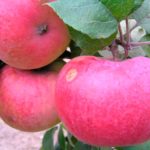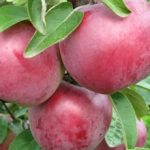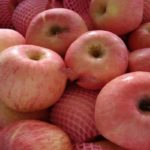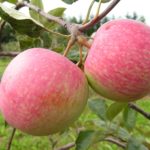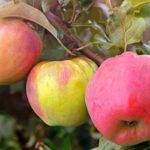A source of iron and fruit fiber is an apple. In order for this necessary product to be on the table all year round, it is necessary to choose the right varieties of apple trees. Late ripening varieties are suitable for winter storage. It is possible to preserve the fruits of the Tellisaare apple tree in the cellar until the end of May, the beginning of June, a variety of folk selection included in the state register of fruit trees under number 9811660 in 1987.
Description of the variety
Tellisaare fruits reach a weight of 100 to 140 g. Their shape is round, slightly flattened, asymmetrical.The dense greenish-white flesh is hidden behind a thick, glossy lemon-colored skin with ruddy spots and reddish stripes covering part of the apple. Orange marks resembling rust, bumps and spots are not a disease, but characteristics of the variety. Large light dots under the skin evenly cover the entire area of the fruit.
From the description of the apple tree given by gardeners from the Baltic states, Leningrad and Pskov regions, Kaliningrad, it follows that the variety has:
- high productivity;
- Fruiting is variable, every other year;
- The first harvest can be harvested 5 years after planting.
Despite the fact that this apple tree has been familiar to the Baltic people for a very long time, information about this variety is rather scarce. There are some discrepancies in the descriptions. This concerns the length and thickness of the stalk, the average weight of apples, stable or variable fruiting. Obviously, this depends on the climatic conditions of the area where the Tellisaare apple tree grows.
Characteristics of an apple tree
The apple tree was first described as a cultivated variety a little more than half a century ago by J. Tellisaare, after whom it was named. It is difficult to say when the variety was actually bred. Judging by the stories of Estonian amateur gardeners, more than a century ago apples of this variety were already growing on the shores of the lake of the same name.
The history of the origin of the cultivated plant came from an unknown seedling, possibly wild. Conscious selection of trees with a dense crown with rounded outlines has been traced since the 1960s. At the beginning of the second half of the 20th century, the apple tree was widespread only in the Baltic republics.Having appreciated the high taste qualities of medium-sized fruits, long shelf life and high yields, agronomists in many regions decided in favor of orchards with Tellissaare.
These apples have not taken root in all regions. The temperate climate of central Russia and the Baltic states are optimal conditions for an unpretentious, late-flowering plant. These are the pros and cons of the variety:
- late flowering practically reduces to zero the possibility of barren flowers caused by night frosts;
- ripening of fruits by the end of September increases shelf life;
- constant abundant harvests will shorten the life of the tree;
- The apple tree has average resistance to frost; in severe winters it may die;
- fungal infections and scab in Tellisaare are not scary.
The fruiting of a medium-sized apple tree is stable due to the low growth of branches. Fruit buds are located on ringlets - this is a feature of the variety. Tasting assessment shows that the taste of the table apple is sweet and sour, and the aroma is pleasant and pronounced.
The biggest drawback of Tellissaare growing in the Northwestern regions is its low frost resistance.
Timing of flowering and fruit ripening
The Tellisaare apple tree blooms at the end of May, beginning of June. The fruits ripen by mid-September, but reach consumer maturity only by the end of October.
Apples have good shelf life. When stored in a cool room, the crop will not lose its presentation until February. If you store the fruits wrapped in paper or in a box with sand (in the cellar), you can enjoy them until June.
Diseases and pests
The damage to the trunk by lichens and mosses occurs due to failure to maintain a gap between seedlings, which creates shading when the crowns grow.Diseases affecting apple trees planted in areas near overflowing rivers and in wetlands:
- Cladonia;
- Hypogymnia;
- Parmelia;
- Dicranum;
- Mnium
Considering the neat crown of the Tellisaare apple tree, these diseases, with proper prevention - whitewashing the trunk, are more likely to affect branches hidden by dense foliage.
Diseases caused by bacteria and viruses can affect immature seedlings if the wrong choice of planting material is made:
- Tobacco necrosis virus is expressed in the pigmentation of part of the leaf - loss of chlorophyll.
- Pseudomonas syringae van Hall is manifested by cracking of the bark.
- Apple proliferation, Apple witch's broom - dormant buds that do not bloom in the spring produce a bunch of thin shoots.
All of the above diseases of adult trees can be treated or stopped if the problem is noticed in time and appropriate measures are taken. It is practically impossible to save first-year seedlings due to the transience of viral and genetic diseases.
Powdery mildew, leaf damage with “rusty” spots, and leaf curling do not threaten Tellissaare fruit trees, because they are caused by fungi, to which the Estonian variety has increased immunity.

